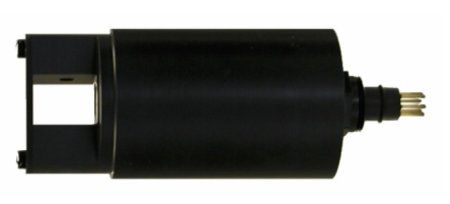|
Hawaii Ocean Time-series (HOT)
in the School of Ocean and Earth Science and Technology at the University of Hawai'i at Manoa |
|
| » Home » Analytical Results » Chloropigment by Flash Fluorescence | ||||||||
Sampling ProcedureFluorescence was measured with a Sea Tech Model ST0250 flash fluorometer (#32) up until HOT-130, then with a Sea-Point chlorophyll fluorometer (#2440 and #2441) from HOT-131 onwards. The data was collected using the Sea-Bird CTD system. Fluorescence traces were collected on as many casts as possible. Because an absolute radiometric standard is not available for fluorometers, instrument drift was corrected via calibration with bottle fluorometric chlorophyll a plus accessory pheopigments analyzed using a Turner Designs Model 10-AU fluorometer. A linear relationship of the form Vchl = b*Vfluor +a was used to convert all fluorescence data (Vfluor) to chloropigment (Vchl). ResultsStack plots of chloropigment (fluorescence) and bottle fluorometric
chlorophylls+pheopigments for 2022 are shown in the figures below. The
offset is .2 µg/l. Chloropigment profiles show the chlorophyll maximum at the base of the euphotic zone, characteristic of the central North Pacific Ocean. Chloropigment profiles show the influence of internal waves when plotted againt pressure, but remain relatively constant within a cruise when plotted against potential density (σθ). However, there is substantial cruise-to-cruise variability in both the position and magnitude of the chlorophyll maximum. Representative chloropigment profiles plotted against pressure for a period of 34 years are shown in Figure 4A, Figure 4B, Figure 4C, Figure 4D, Figure 4E & Figure 4F and against potential density in Figure 5A, Figure 5B, Figure 5C, Figure 5D, Figure 5E & Figure 5F. In order to facilitate comparison, only night-time profiles are presented after normalization to the average density profile obtained from the CTD burst sampling for each cruise. Month-to-month variability in the average depth of the chlorophyll maximum is apparent. | ||||||||


